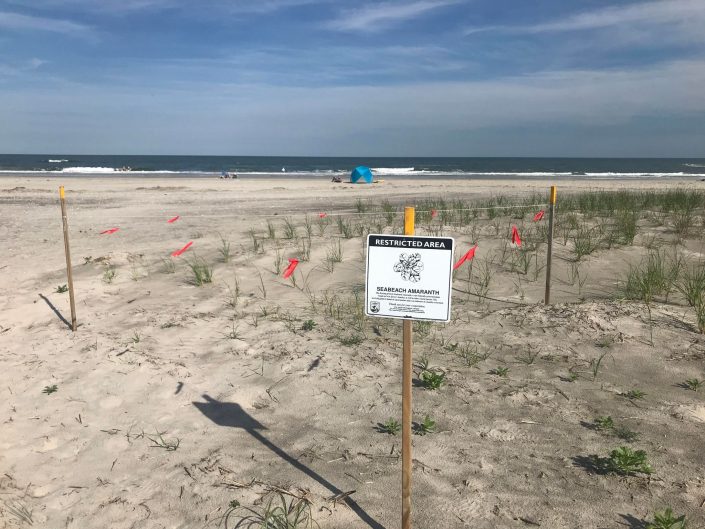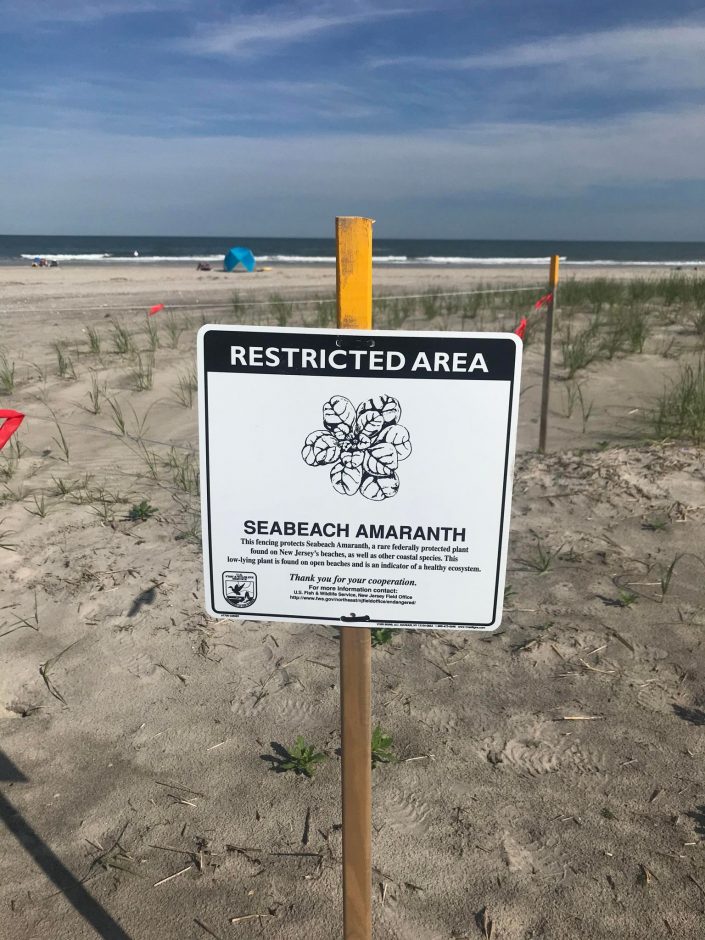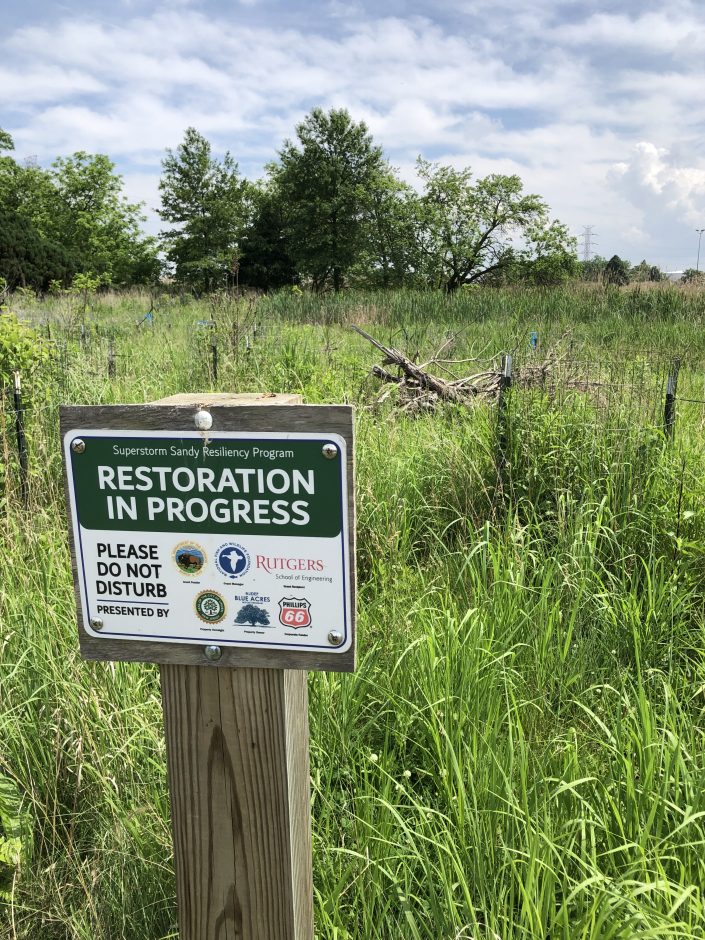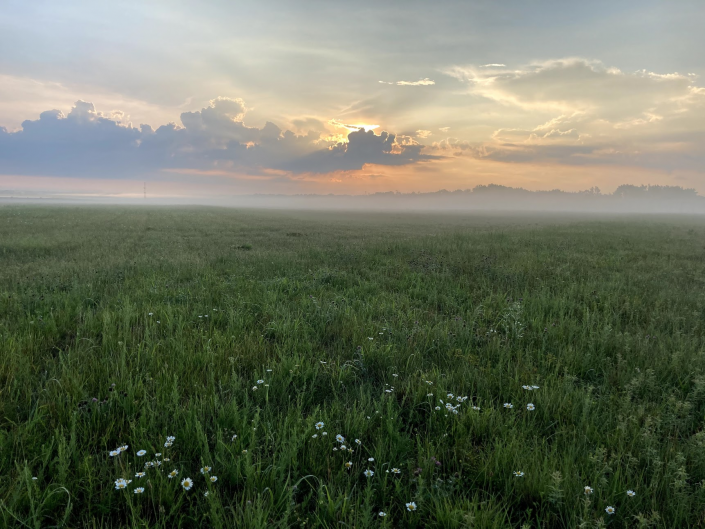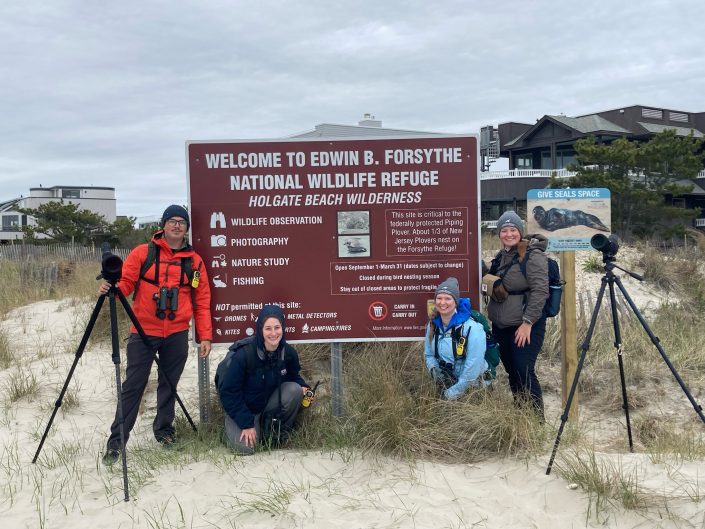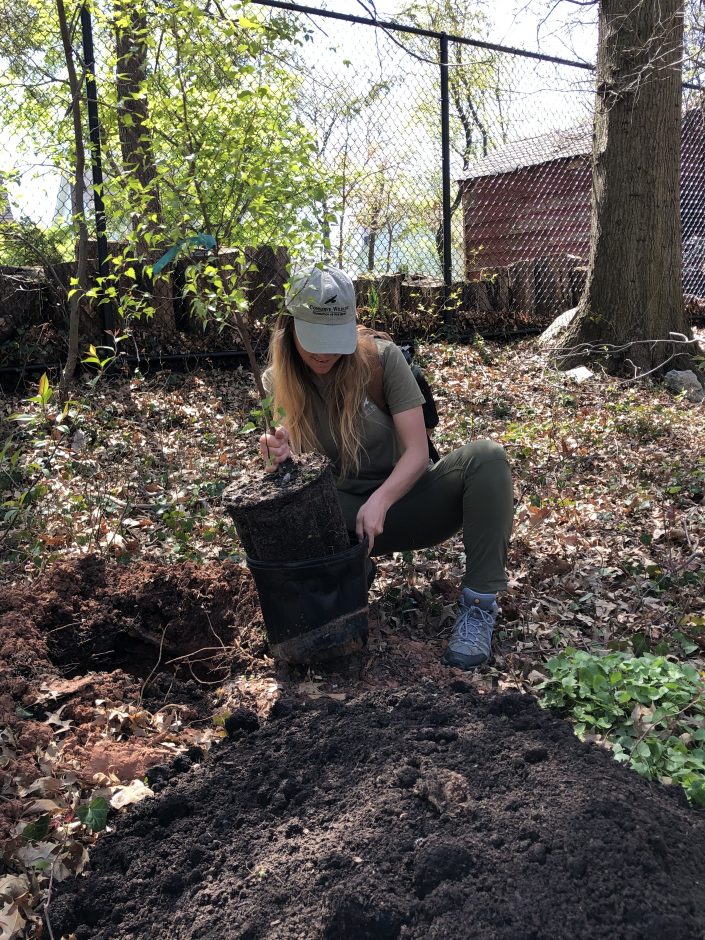Protecting Seabeach Amaranth – New Jersey’s Endangered Beach Plant
by Todd Pover, Senior Wildlife Biologist
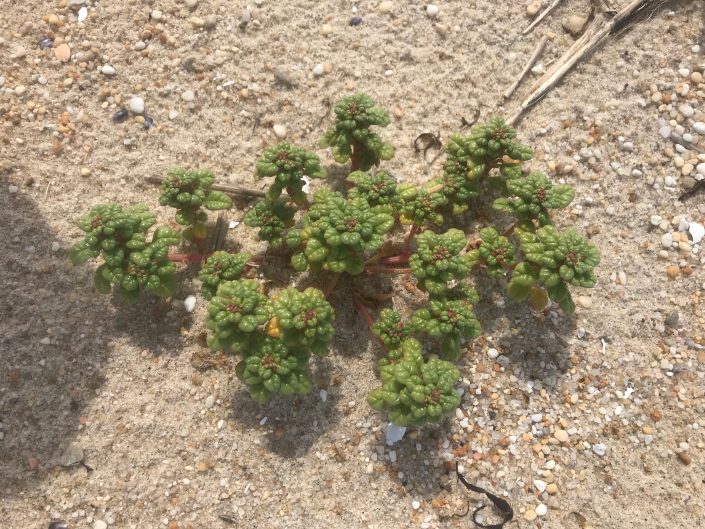
Although most of CWF’s work focuses on protecting New Jersey’s imperiled wildlife, in a few cases our mission overlaps with at-risk plants, as well. One such case involves seabeach amaranth, a state and federally-listed plant that shares the beach with our endangered beach nesting birds. In the past, CWF’s effort to protect seabeach amaranth was more “behind the scenes” through the development of beach management plans with coastal communities that put measures in place to protect plants from municipal activities. Over the past several years, in partnership with and through funding by the U.S. Fish and Wildlife Service – New Jersey Field Office, CWF has now taken a more pro-active role in helping monitor and protect seabeach amaranth.
Starting in late May and all throughout June, CWF staff combs the state’s Atlantic coast beaches looking for amaranth plants that are just starting to germinate. Once found, the plants are protected with fence and signage, so they aren’t trampled by beach goers or driven over by vehicles conducting various beach maintenance activities, such as cleaning the beach with mechanical rakes. In the past they would have gone undetected and unprotected; few of the plants would have made it to the stage where they flower and produce seeds. Seabeach amaranth is an annual plant, its continued occurrence depends on seeds being produced and then dropped nearby or dispersed by wind or tides for next year’s “crop” of plants.
So far this season, mostly through the diligent fieldwork of CWF’s Biologist Sherry Tirgrath, we have located and protected 811 plants at 19 sites leading into the busy July 4 th holiday. The highest concentrations of plants are on beaches in southern Monmouth and northern Ocean counties. Since seabeach amaranth was rediscovered in New Jersey in 2000 – it had been absent since 1913 – Monmouth County, in particular Sandy Hook, a unit of Gateway National Recreation Area, has harbored most of the state’s seabeach amaranth population. However, over the past few years, increasingly more plants have been found on Ocean County beaches. In addition to increasing the overall population of plants, this wider distribution is one of the goals of the CWF/USFWs initiative.
With the early season work completed, CWF will now move onto other phases of the project. That includes repeat surveys for later germinating plants, ongoing maintenance of the fence we erected, and coordinating with the state’s beach nesting bird staff as they remove their fence once breeding season ends so it can be checked for plants. Those sites often have large numbers of plants as that habitat has been protected for birds – and as a result plants too – since late March or April. Finally, an annual statewide survey of seabeach amaranth occurs in late July and August and CWF will be “on call” to fence plants that are found by those survey crews. Plants can persist until late November in years with mild fall weather and low-flooding, in those cases our fence could remain up until then, so our work for the season has really just begun.
